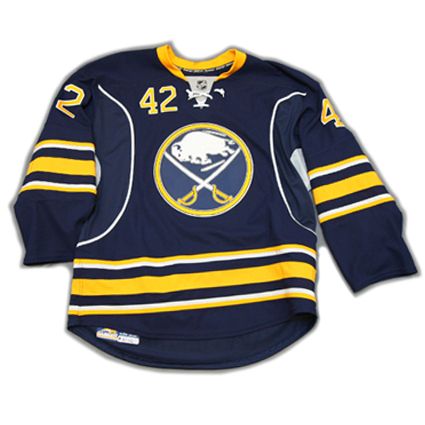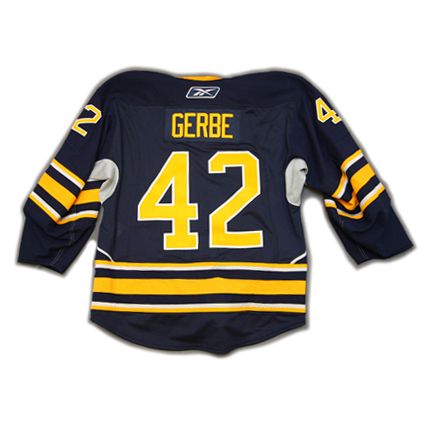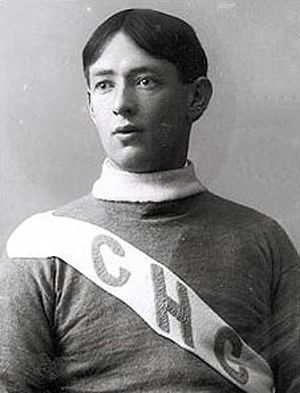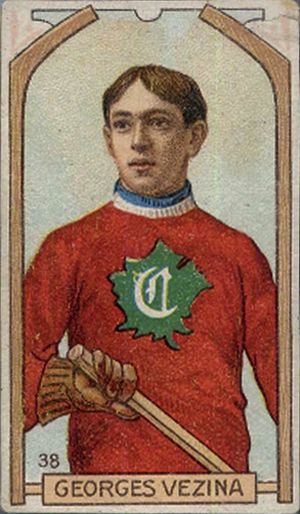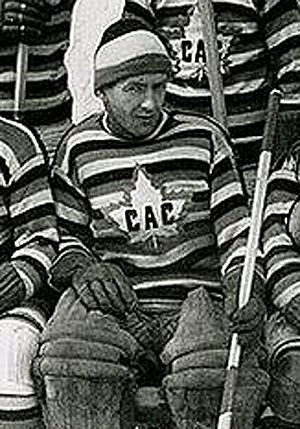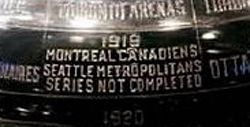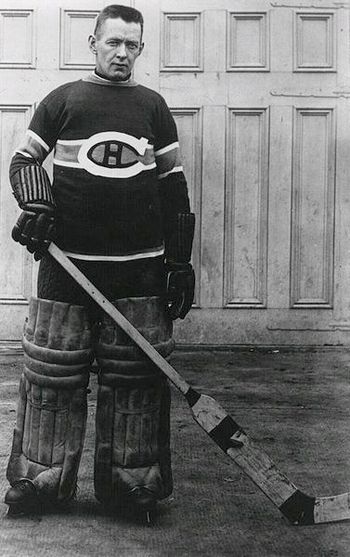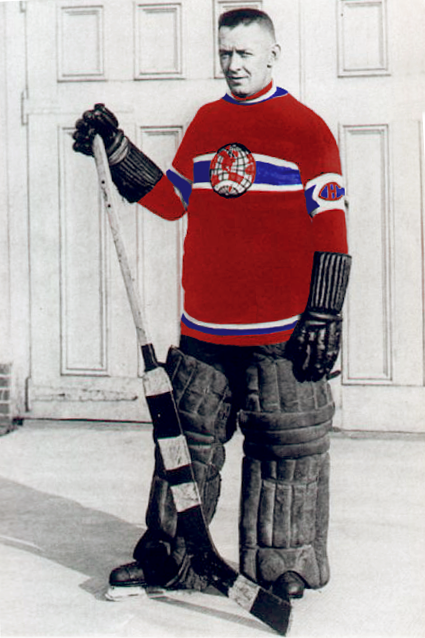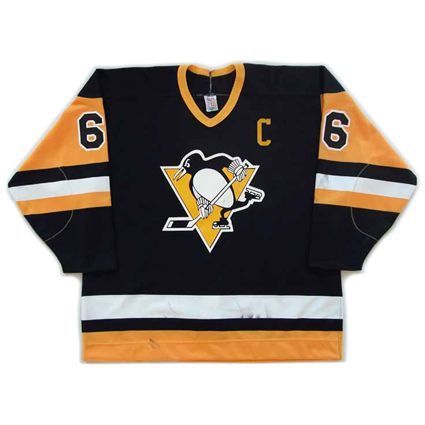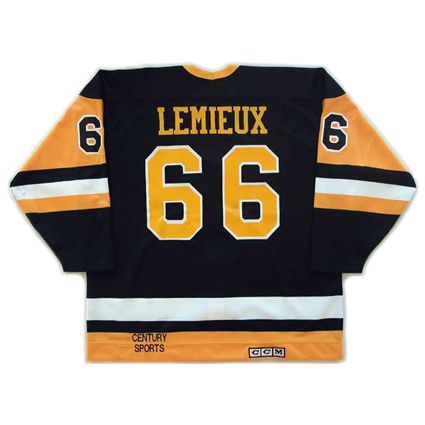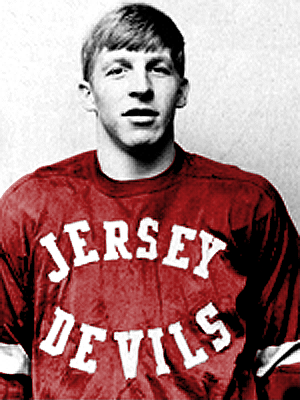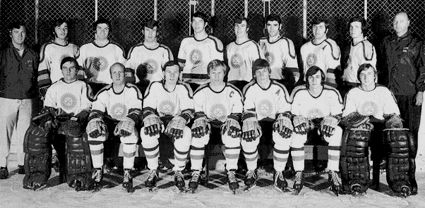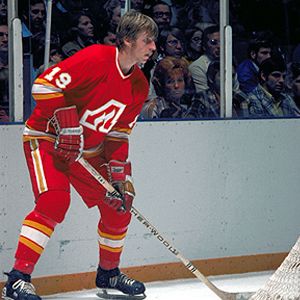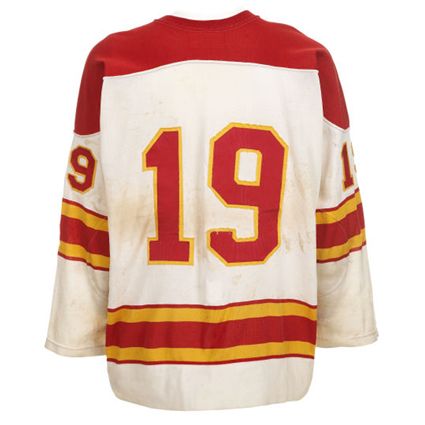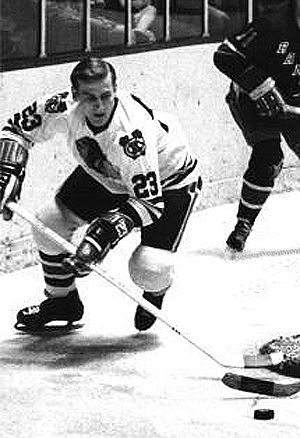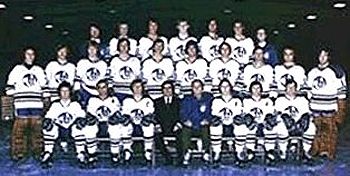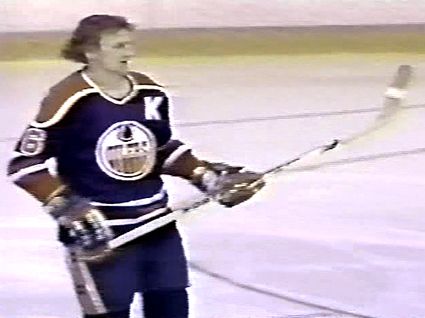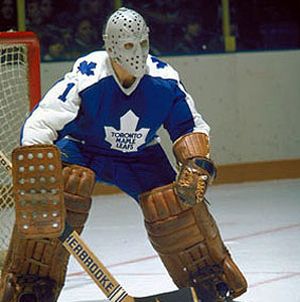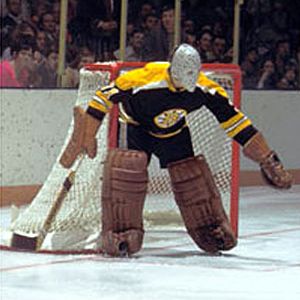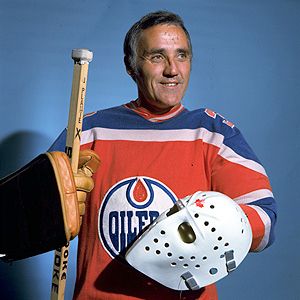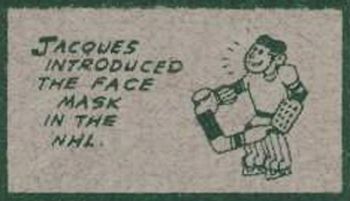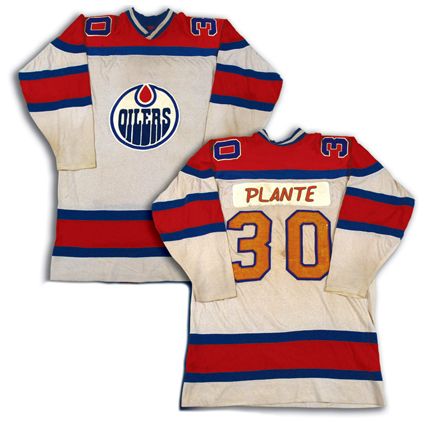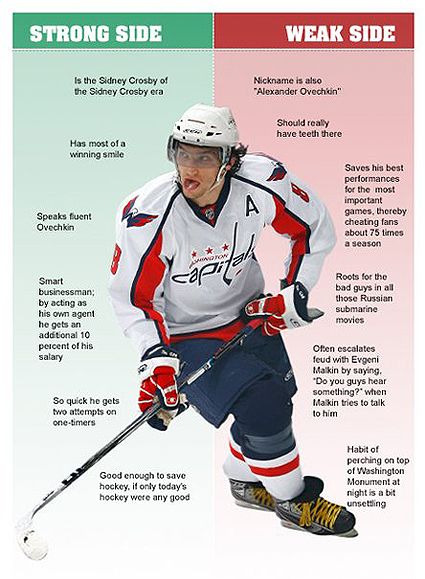Saturday, January 22, 2011
2010-11 Buffalo Sabres Nathan Gerbe Jersey
With time winding down in last night's game between the New York Islanders and Buffalo Sabres and New York leading comfortably by a 4-0 score, Nathan Gerbe got the puck along the boards near the top of the faceoff circle and began a rush up the ice. At center ice he breezed by P. A. Parenteau at center ice before successfully putting a deke on defenseman Jack Hillen and lifted a beautiful backhander past goaltender Kevin Poulin with 3:22 remaining.
Gerbe stayed on the ice for the ensuing faceoff and broke for the Islanders zone after the drop of the puck. He managed to poke the puck past defenseman Dylan Reese, who fanned on a chance to clear it. Gerbe turned him backwards in the process of going by Reese, and as he turned once again to face the Islander goal, Sabres center Mike Greer poked the puck forward to Gerbe, who patiently held for a split second to give the puck time to move farther forward into a good shooting position before he snapped a shot past Poulin once again with 3:17 remaining for his second goal in just five seconds to set a Sabres record for the two quickest goals by one player.
The two goals in five seconds tied Peter Mahovlich's feat in 1971, but was still one second behind the NHL record shared by center Nels Stewart, who scored two in four seconds in 1931 for the Montreal Maroons and Deron Quint of the Winnipeg Jets in 1995.
Quint's two goals in four seconds were all the more remarkable since the defenseman's total for the season was just five goals in 51 games.
While thoughts then turned to Bill Mosienko's record three goal hat trick in 21 seconds in 1952, Gerbe was unable to score again and the Islanders added an empty net goal to complete their 5-2 win. For his stunning back to back goals, Gerbe was named the game's #2 star of the night.
Today's featured jersey is a 2010-11 Buffalo Sabres Nathan Gerbe jersey. The Sabres debuted this jersey in the 2008-09 season as an alternate jersey. It was a modern update on the Sabres classic original sweaters worn from 1970 to 1996, with darker shades of the original blue and gold.
For 2010-11 this jersey was promoted to the regular home jersey, replacing the unloved "Buffaslug" sweater design.
Gerbe, just 5' 5", is a product of the US National Development Program and played college hockey for Boston College of Hockey East, winning a national championship in 2008. Prior to this season he has played mainly with the Portland Pirates of the AHL, but has appeared in ten games in both 2008-09 and 2009-10, when he scored his first NHL goal. To date, Gerbe has played 30 games for the Sabres this season, scoring 5 goals and 7 assists.
Labels:
Buffalo Sabres,
Gerbe
Friday, January 21, 2011
1924-25 Montreal Canadiens Georges Vezina Jersey
Born on this date in 1887, goaltender Georges Vezina joined his local team, the Chicoutimi Hockey Club.
Vezina in 1909 as a member of the Saguenéens
The club, known as the Saguenéens, played an exhibition game against a brand new club playing in their first ever season, the Montreal Canadiens in February of 1910. Vezina shutout the Canadiens by a score of 2-0 that evening. So impressive was Vezina's performance that his opponent that evening, Joseph Cattarinich, recommended Vezina to his team owner George Kennedy, who reached an agreement with Vezina to play for the Canadiens beginning with the 1910-11 season.
Vezina during his first season with Montreal
Vezina made his Montreal debut on New Year's Eve in 1910 and went on to play all 16 of the Canadiens games in the National Hockey Association (NHA), finishing with a record of 8-8 while allowing the fewest goals in the league and his cool demeanor earned him the nickname the "Chicoutimi Cucumber". The following year he again led the league with the fewest goals allowed, but Montreal gave him little offensive support and their 8-10 record left them in last place.
Vezina in the Canadiens barberpole jerseys of 1912-13
He recorded his first professional shutout, as well as the first in Canadiens history, with a 6-0 win over the Ottawa Senators on January 18, 1913. After finishing with a 9-11 mark that season, the Canadiens improved in 1913-14 when Vezina posted his first winning season with a 13-7 mark, good for a tie for first place with the Toronto Blueshirts, who defeated Montreal in a two game playoff series for the championship.
After a last place finish in 1914-15, Montreal rebounded strongly in 1915-16 to earn their first O'Brien Cup as NHA champions with a 16-7-1 record. As champions of the NHA, Montreal earned the right to host the Portland Rosebuds of the PCHA in a best-of-five playoff for the rights to the Stanley Cup.
Portland shut out Montreal 2-0 in Game 1, but the Canadiens came back to win the second game 2-1. Game three also went to Montreal 6-3 prior to Portland evening the series with a 6-4 win in Game 4 to set up a winner take all Game 5. Vezina and the Canadiens then captured the first Stanley Cup in franchise history with a 2-1 win over the Rosebuds in front of their fans at the Montreal Arena.
Vezina from the Stanley Cup winning season of 1915-16. Note the "CA" logo on the chest, worn prior to the now familiar "CH" logo, which would arrive the following season.
Montreal defeated Ottawa in a two-game, total-goals playoff 7-6 to remain NHA champions in 1916-17 to earn their second O'Brien Cup but fell in the Stanley Cup Finals to the Seattle Metropolitans.
For the 1917-18 season, Montreal began play in the new National Hockey League (NHL), Vezina recorded the first shutout in NHL history on February 18, 1918 and early in the next season, on December 28, 1918, he became the first goaltender to ever earn a point in the NHL when he was credited with an assist in a 6-3 win over the Toronto Arenas. While Montreal finished second during the regular season, they defeated Ottawa in the playoffs for their first NHL championship. They then travelled to Seattle to face the Metropolitans in the Stanley Cup Final, but play was suspended with the series tied at 2-2-1 when players began to become sick due to the Spanish Influenza epidemic, which would claim the life of Canadian Joe Hall.
The engraving noting "series not completed" for the 1919 Stanley Cup Finals
After four more seasons with Montreal, each with a winning record, Vezina established an NHL record with the first goals against average under 2.00 when he finished the season at 1.97. Montreal then defeated the favored Senators to become champions of the NHL and went on to capture their second Stanley Cup in 1924 when they first defeated the Vancouver Maroons 2 games to none and then the Calgary Tigers two games to none. In their four Stanley Cup contests, Vezina allowed just four goals, with a shutout in the final game to clinch the cup.
Vezina from the Stanley Cup winning 1923-24 season
The following season Vezina set career best marks with 17 wins as well as lowering his goals against average to 1.81.
When Vezina arrived for training camp in 1925-26, he appeared sick, and by the time the regular season began on November 28, he had lost 35 pounds in six weeks and was running a fever of 102º. Still, he started the game against the Pittsburgh Pirates and held them scoreless through one period. During the intermission he began vomiting blood prior to insisting he begin the second period, but he collapsed on the ice and was taken out of the game. "In the arena, all was silent as the limp form of the greatest of goalies was carried slowly from the ice," reported one journalist.
The following day he was diagnosed with tuberculosis and never played again. He returned home to Chicoutimi and died on March 27, 1926 just 39 years old.
During his 15 year career Vezina played every one of Montreal's 328 regular season and 39 playoff games and had the lowest goals against average seven times and the second lowest on another five occasions. With Vezina in goal, Montreal would win two NHA championships, three NHL championships and two Stanley Cups from those five appearances. His final combined NHA and NHL totals show 175 wins, 15 by shutout, a goals against average of 3.49 and another 15 playoff victories.
In 1926 the owners of the Canadiens donated a trophy in his name, the Vezina Trophy, which is awarded annually to the most valuable goaltender each season in the NHL.
He was inducted into the Hockey Hall of Fame as a charter member of it's inaugural 12 man class in 1945.
Today's featured jersey is a 1924-25 Montreal Canadiens Georges Vezina jersey. After winning the Stanley Cup in 1924 by defeating the Vancouver Maroons of the PCHL and the Calgary Tigers of the WPHL, Montreal flaunted their title with a special set of sweaters for the 1924-25 season, featuring a globe pictured on the front which contained the word "Champions" inside of it to commemorate their status as World Champions.
Today's video selection is a brief look at the career of Georges Vezina.
Labels:
Montreal Canadiens,
Vezina Georges
Thursday, January 20, 2011
1988-89 Pittsburgh Penguins Mario Lemieux Jersey
Mario Lemieux of the Pittsburgh Penguins scored his 100th point of the season for the fourth straight year when he scored a goal in an 8-3 Penguins win over the Chicago Black Hawks on this date in 1988.
Also on this date, exactly one year later, Lemieux topped that feat by becoming only the second player in NHL history, after Wayne Gretzky, to score his 50th goal in less than 50 games in a 7-4 Penguins loss to the Winnipeg Jets in Winnipeg.
Lemieux's 50th goal came in his 44th game (officially Pittsburgh's 46th game) and made him the the Penguins all-time leading scorer with 637 points in just his 336th game, passing Rick Kehoe's 636 points, which took Kehoe 722 games to reach, 386 more games than Lemieux, considerably more than twice as many.
Maurice Richard was the first player in league history to attain 50 goals in 50 games in 1945. It would take 36 years for Mike Bossy to equal Richard with two dramatic goals in the final five minutes of his 50th game.
Gretzky joined the 50 in 50 club in grand style, requiring just 39 games when he scored an incredible nine goals in two consecutive games to reach the exclusive milestone before New Year's Eve. He repeated the 50 in 50 feat twice more, in 1983-84 in 42 games and again in 1984-85, which took 49 games, making him the only man to ever do so three times.
Lemieux would go on to finish the season with 85 goals and 114 assists for 199 points to lead the NHL in scoring that season to win his second consecutive Art Ross Trophy. His 85 goals made him only the second player to ever score more than 70 in a season. In addition, 13 of his goals were scored while the Penguins were shorthanded, an NHL record which still stands today, more than 20 years later and one of four offensive records Lemeiux still holds.
In addition to his 50 goals in 46 games, Lemieux's 1988-89 season is remembered for his remarkable game on New Year's Eve when he score eight points, highlighted by his five goals scored in all five possible ways, even strength, power play, shorthanded, penalty shot and empty net!
Today's featured jersey is a 1988-89 Pittsburgh Penguins Mario Lemieux jersey. Penguins jerseys were in a time of transition in 1988-89. Starting in 1984, the font for the names on the back now had serifs. The sleeve numbers were still located in the white shoulder area and both the names and numbers were heat sealed onto the jerseys with a plasticky material.
For 1988-89 the numbers were relocated farther down the arms into the gold area on both the home and away jerseys before a new set of jerseys later that season would see a new taller and thinner font for both the numbers as well as the names, which were now sans-serif. Additionally, they would be made of twill material from then on, which were now all sewn on rather than heat sealed as in the past.
Frustratingly, we could not find video of Lemieux scoring his 50th goal in 46 games, so in today's video segment, we feature Lemieux's Top 10 plays, as some of his assists are as spectacular as his goals.
The well trained eye will notice the numbers on his jersey changing places from the shoulders to the arms depending on which season the highlights are from.
Here are Lemieux's five goals in five ways from New Year's Eve in 1988. Notice the "hybrid" style of jersey, the same today's featured jersey, with the old serifed font for the name, but the numbers in the new lower position on the arms prior to the change in font to the shorter, more squarish style worn while Pittsburgh won their first two Stanley Cups in 1991 & 1992.
Labels:
Lemieux,
Pittsburgh Penguins
Wednesday, January 19, 2011
1973-74 Atlanta Flames Ed Kea Jersey
Born on this day in Weesp, Netherlands in 1948, the story of Ed Kea is one of triumph and tragedy.
His family emigrated to Ontario, Canada when Ed was four years old and he began to play hockey like many young boys in Canada.
His first professional club was the Jersey Devils of the Eastern Hockey League (EHL) in 1969-70 where the defenseman played 52 games, scoring 22 points and accumulating 130 penalty minutes.
The following season he played 74 games with Jersey, scoring 34 points, and also played five games with the Seattle Totems of the Western Hockey League.
For the 1971-72 season, Kea would head to St. Petersburg, Florida for a year with the short-lived Suncoast Suns of the EHL. Kea was the Suns highest scoring defenseman and set career highs with 10 goals and 39 assists for 49 points.
The 1971-72 Suncoast Suns. Kea is third from the right in the front row wearing the assistant captain's "A".
He moved a step closer to the NHL in 1972-73 when he played for the Omaha Knights in the Central Hockey League. In 68 games he equalled his career high ten goals from the year before and contributed six points in 11 playoff games as the Knights won the Adams Cup as league champions.
The 1973-74 season was a memorable one for Kea. He would play seven games for the Knights and 51 games for the Tulsa Oilers, scoring 23 points, but the true highlight was making his NHL debut with the Atlanta Flames. He would see action in just three games that season, but his two assists would make Kea the first player born in the Netherlands to ever score a point in the NHL.
Ed Kea, the first Dutchman to ever score a point in the NHL
He would work to establish himself as a full-time NHL regular the following season, as he spent 21 games with Omaha but the majority of the season with 50 games in Atlanta, which included his first NHL goal, also the first one ever by a player born in the Netherlands.
Kea would play exclusively in the NHL over the next three seasons with the Flames, supplying solid defensive work, with a +21 rating in 1976 and a +25 in 1978, as well as steady offensive contributions with 27, 25 and 26 points.
He played on more season in Atlanta, although he was limited to 53 games, but still managed his usual point production with 24. He also appeared in a pair of games with Tulsa back in the CHL.
Prior to the 1979-80 season, Kea was traded to the St. Louis Blues, where he would play three and a half seasons with a +9, +15 and +19 rating to go along with his 19, 21 and 16 points the first three seasons.
After 46 games in 1982-83, Kea was sitting at just five assists with a -7 rating and was sent down to the Salt Lake Golden Eagles of the CHL, where during just his ninth game with the Golden Eagles, Kea would suffer a career ending severe head injury when his bare head struck the ice face first after a clean check, breaking his nose and knocking him unconscious. He would require emergency major brain surgery to save his life two days later to relieve hemorrhaging, swelling and clotting and was left both mentally and physically disabled after beating 50-50 odds of surviving the surgery.
Worse yet, since he was playing in the minor leagues, the NHL benefits for catastrophic injuries did not apply to his case, and with his inability to support his wife and four children, times were very hard for the Kea family.
It was the handling of Kea's case in particular that appalled journalist Russ Conway, which led to him exposing the corruption of Alan Eagleson and his embezzlement of insurance payments meant for the players he represented as head of their union which led to Eagleson's conviction of fraud and embezzlement.
Kea survived the surgery and underwent therapy and rehabilitation and moved on to a life beyond hockey, but 16 years later tragedy struck again, and Kea died in 1999 at the age of just 51 when he drowned in the swimming pool at his family's summer cottage.
Of note, former NHLers Jeff Bukeboom and Joe Nieuwendyk are Kea's nephews.
Today's featured jersey is a 1973-74 Atlanta Flames Ed Kea jersey as worn by Kea during his rookie season in the NHL when he became the first player born in the Netherlands to score a point in the NHL. In his ten year career, Kea would score 30 goals and 145 assists for 175 points.
The Flames used the same jersey for each of their eight seasons in Atlanta and it remained intact after the relocation to Calgary, allowing for the obvious change in crest from the flaming A to the flaming C, all the way through the 1994-95 season, a 15 year run for this classic hockey template.
The Calgary Flames pay tribute to their past by using the original Atlanta Flames logo as the A worn to designate their alternate captains.
This jersey was worn without names on the back until 1977-78 when they became mandatory for all NHL jerseys.
Today's video hunt finds us with nothing but brawls to pick from, as the Flames apparently never actually scored any goals if we are to believe youtube.
Note the Philadelphia Flyers reverse nameplates. They had one set made up for TV games and wore them on both the white and orange jerseys, a look they have recently revived.
This next collection of mayhem features the Flames and the Maple Leafs from 1979.
Labels:
Atlanta Flames,
Kea Ed
Tuesday, January 18, 2011
1975-76 Cleveland Crusaders Paul Shmyr Jersey
The arrival of the World Hockey Association was a blessing for many players, such as those toiling in the minor leagues, unable to crack an NHL roster. Others who benefitted were those already in the NHL in need of a sizable raise, a chance to be a "big fish in a small pond" or simply a change of scenery.
One such player was Paul Shmyr, born on this date in 1946. Shmyr began his professional career after playing with the New Westminster Royals in junior hockey when he joined the Fort Wayne Komets of the IHL. The hard-nosed defenseman played 70 games, scoring 22 points and being whistled for 91 penalty minutes and was a part of the Komets run to the Turner Cup Finals in the postseason.
He spent the next two seasons with the Dallas Black Hawks of the CHL. His 46 point, 118 penalty minute season led to a call-up by the Chicago Black Hawks for his NHL debut with three games, during which he scored his first NHL goal.
Shmyr while wearing #23 early in his career with Chicago
The next season saw him play another 48 games in Dallas as well as 24 games with Chicago plus an additional seven playoff games. The improvement in his game led to him being with the Black Hawks full time in 1970-71 where he got into 57 games, scoring his second NHL goal as well as a dozen assists plus an additional nine playoff games.
Just when it looked like Shmyr had found a home in the NHL, things changed when the West Division champion Black Hawks traded Shmyr to the California Golden Seals, easily the worst team in the NHL.
While life in California certainly meant more playing time for Shmyr, and a resultant increase in both points, with 27, and penalty minutes, his first season over 100 with 156, the team failed to qualify for the playoffs as they finished 47 points behind his former club in Chicago.
Perhaps it was the white skates that led Shmyr to want to leave the Golden Seals
It was then that Shmyr jumped to the rival WHA for the league's inaugural 1972-73 season, joining the Cleveland Crusaders franchise, with a roster consisting of absolutely no one you've ever heard of outside of former Boston Bruins goaltender Gerry Cheevers.
The inaugural Cleveland Crusaders of 1972-73
And with that leap of faith in the brand new franchise playing in a brand new league, Shmyr's career was transformed. The wide open style of play in the WHA allowed Shmyr, who was named team captain and the only one the team would ever have, to set a personal high in points with 48, while the brawling, rugged element of the league also saw him set a career high in penalty minutes with 169. Following the season he was named to the WHA First All-Star Team.
1973-74 was a near repeat of the previous season, only this time he set a career high in goals with 13 on his way to 44 points, 165 penalty minutes and another berth on the WHA First All-Star Team.
Shmyr defending for Cleveland against the Minnesota Fighting Saints.
Note the clear boards in the St. Paul Civic Center.
Shmyr was then rewarded with a spot on Team Canada for the 1974 Summit Series versus the Soviet National Team prior to the 1974-75 season. He was limited to 49 games but rebounded the next season with 70 games and a new personal high in points with 50 and his third WHA First All-Star Team selection. He was also named the recipient of the Dennis Murphy Trophy as the WHA's Top Defenseman for 1976.
With the financial troubles of the Crusaders on the rise, Shmyr, who was owed money by Cleveland declared himself a free agent and signed with the San Diego Mariners of the WHA.
With the Mariners, Shmyr tied his career high in goals with 13 and his career high from the previous season in points with 50. Following the season, the Mariners folded, and the free agent Shmyr signed on with the Edmonton Oilers where he would again be named team captain. Two more rock solid seasons followed with 49 and then 47 points, as well as two more 100+ penalty minute seasons, his sixth and seventh consecutive while a member of the WHA.
Can anyone explain the Russian captain's "K" on Shymr's Oilers jersey?
While Shmyr's franchise remained in business for the 1979-80 season, his league did not, as the four surviving WHA teams were admitted into the NHL as the WHA ceased to exist. With the former WHA severely limited in the number of players they could protect, he was claimed by the Minnesota North Stars who held his NHL rights.
He was installed as the North Stars team captain, providing much needed leadership to a young squad. Shmyr played well in Minnesota, appearing in 63 games and finished the season with a +25 rating. After one more season with the North Stars, he signed as a free agent with the Hartford Whalers, a former WHA franchise, for his final season before retiring.
Shmyr played seven NHL seasons and all seven in the brief history of the WHA. His combined numbers show 854 games played, 74 goals and 320 assists for 394 points as well as 1,388 penalty minutes, a testament to his rugged play.
Today's featured jersey is a 1975-76 Cleveland Crusaders Paul Shmyr jersey as worn during the season he was named the WHA's top defenseman.
The original Crusaders sweaters had "Northwestern" style stripes on the arms and waist, with a thicker black stripe bordered by two thinner purple ones separated by white spaces for their first two seasons. They also had black names to contrast their purple numbers.
They then simplified their design in 1974-75 with one thick purple stripe on both the arms and waist as well as making the names purple as well, with the only black remaining being the collar and the outer circle and shield of the crest.
In our video section today, Shmyr explains his departure from Clevleand and discusses the Mariners training camp and violence in hockey.
Oh yea, time to get funky with the 1973-74 Cleveland Crusaders. Love the way the announcer is trying to explain the game to the viewer. Note the "Northwestern" stripes on the first generation Crusaders jerseys.
AND IS THAT CHICKEN WIRE FENCING AT THE END OF THE RINK? What the hell!
Labels:
Cleveland Crusaders,
Shmyr
Monday, January 17, 2011
1974-75 Edmonton Oilers Jacques Plante Jersey
After earning his fame as a member of the Montreal Canadiens beginning in 1952-53, where he won six Stanley Cup championships, six Vezina Trophies and the Hart Trophy, as well as the notoriety of being the innovator of the modern goalie mask in 1959, Jacques Plante, who was born on this date in 1929, began the second phase of his career when a personality conflict between the quirky goaltender and headstrong coach Toe Blake led to Plante being traded to the New York Rangers in 1963.
Plante's first season with the Rangers saw him play in 65 of the Rangers 70 games, but the club finished fifth out the six teams and out of the playoffs, a position he was not accustomed to while with the Canadiens, who not only made the playoffs ever year of his time in Montreal, they won the championship six out of his 11 seasons in Montreal.
His second season in New York was not nearly as simple, as he only played 33 games with the Rangers and spent time in the minors with the Baltimore Clippers, playing in 17 games before retiring, as he required surgery on his right knee in addition to his wife's illness at the time.
For the next two seasons Plante was a sales representative for Molson beer and had seemingly left his playing days behind him. All that changed in 1967 when the NHL expanded by six teams, doubling the number of jobs available at all positions, especially the close-knit world of goaltending, which previously was limited to roughly 12 jobs.
With the six new expansion teams looking to fill their rosters, a mix of career minor leaguers and veterans were pressed into service by "the second six", with mixed results. The St. Louis Blues were the most successful of the first year teams, upsetting the first place Philadelphia Flyers in the opening round of the playoffs and eliminating the Minnesota North Stars to become the Western Conference, made up entirely of the expansion clubs, representative in the Stanley Cup Finals, where they were quickly dispatched by the Canadiens.
Pleased with the play of veteran Glenn Hall, the Blues drafted the retired Plante in an effort to strengthen their goaltending tandem, and the rejuvenated Plante accepted the Blues overtures and returned to the NHL. Splitting time with Hall, they posted nearly identical records as the pair led the league with the least number of goals allowed, which earned them a split of that season's Vezina Trophy at the age of 40. The Vezina was Plante's seventh, a new NHL record.
During the playoffs, the Blues defeated both the Flyers and Los Angeles Kings to return to the finals, only to meet the same fate at the hands of the Canadiens.
St. Louis then traded Plante to the Toronto Maple Leafs for the 1970-71 season where he led the NHL with the best goals against average at just 1.88.
He played for the Maple Leafs again in 1971-72, appearing in 34 games, and most of the 1972-73 season before being dealt late in the year to the Boston Bruins where he played the final eight games of his storied NHL career, going 7-1-0 to help the Bruins qualify for the playoffs.
Having failed miserably with their choice of Maurice Richard as head coach, who lasted just two games of their debut season, the Quebec Nordiques of the rival World Hockey Association (WHA) signed Plante to a ten year contract to be not only their head coach, but their general manager as well. Plante did manage to improve the team enough in 1973-74 to post a winning record at 38-36-4, but did not qualify for the playoffs and resigned at the end of the season.
Plante then came out of retirement once more at the age of 46 to join the Edmonton Oilers, also of the WHA. The Oilers goaltending position that season was a revolving door of sorts, as Plante appeared in 40 games that season, but his 1592 minutes played was only the equivalent of 26 1/2 games. In all, the three Oilers goalies made 100 appearances in 78 games as their coaches, first Brian Shaw and later Bill Hunter were quick with the hook.
Sadly, Plante was attending the Oilers training camp for the 1975-76 season, but retired for good when he learned that his youngest son had passed away.
Aside from his credit for the modern goalie mask, he is also viewed as an innovator for shouting instructions to his teammates, leaving the crease to play the puck, raising his arm to indicate an icing call for his defensemen, cutting down angles and staying square to the shooter. He is also one of the goaltender to write a book on how to play the position and is viewed as the innovator of modern goaltending.
In addition to his Stanley Cups and awards, his final NHL totals were 837 games, 434 wins, 82 shutouts and a lifetime goals against average of 2.38.
Plante was inducted into the Hockey Hall of Fame in 1978 and the Canadiens retired his #1 in 1995.
Today's featured jersey is a 1974-75 Edmonton Oilers Jacques Plante jersey from his final season of play, his only one as a member of the WHA.
During the team's inaugural season of 1972-73 the team was known as the Alberta Oilers and to drive home the point, all the jerseys had "ALBERTA" on the back where the players name would customarily have been.
For 1973-74 the team changed their name to the Edmonton Oilers, and with the change in team name, the club then went with the standard player names on the back of their sweaters, only in the unusual, almost handwritten font you see on today's featured jersey, which was actually recycled from the previous year and worn only in the preseason, as the club had a new set of jerseys made for the regular season which featured blue shoulders and a more standard block font for the names.
Labels:
Edmonton Oilers,
Plante Jacques
Sunday, January 16, 2011
Weekend Update
From The Onion, America's Finest News Source:
A look at the pros and cons of Alexander Ovechkin
Labels:
humor,
Ovechkin Alexander
Subscribe to:
Comments (Atom)

